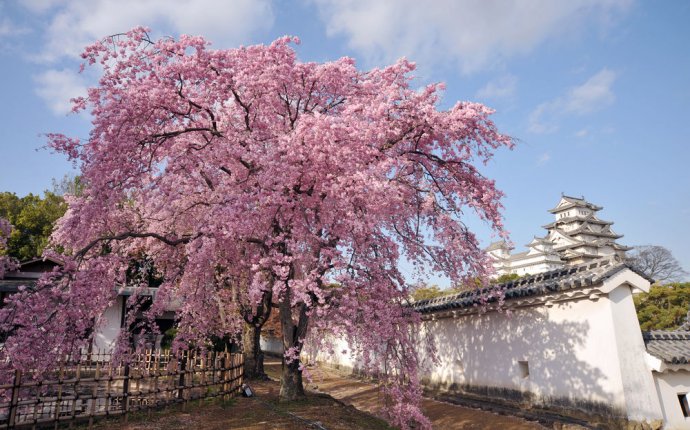
What does Sakura mean in Japanese?
If you are lucky enough to be in Japan during cherry blossom season, it is de rigueur to head out into the local parks and gardens, bring a selection of picnic food and drinks and join the locals for a hanami - or"flower-viewing". It is during this period that the Japanese are at their most relaxed, and all public places take on a party-like atmosphere.
Typical hanami spots include city parks, landscape gardens, castle grounds and along riverbanks, and you'll find all of these areas buzzing with people throughout the sakura season. The blossom usually only hangs around for a couple of weeks - sometimes less if there is heavy rain on the cards - so you only have a brief window in which to enjoy the trees in full bloom. So popular are these parties that some companies will pay a member of staff to sit in the park all day, saving a spot for the office hanami in the evening!
 hanami can be conducted in the daytime sun or in the evening. Both are lovely, but we particularly enjoy the blossoms at dusk when lanterns hang in the trees, turning the canopy a glowing pink. You might also be lucky enough to spot a geisha or two entertaining clients under the trees!
hanami can be conducted in the daytime sun or in the evening. Both are lovely, but we particularly enjoy the blossoms at dusk when lanterns hang in the trees, turning the canopy a glowing pink. You might also be lucky enough to spot a geisha or two entertaining clients under the trees!
History
The tradition of hanami has a history stretching back over many centuries, thought to have begun during the Nara Period (710-794), so by getting involved you will be joining in one of Japan's best-loved and most time-honoured rituals.
 Though the term hanami has been used almost exclusively to refer to cherry blossom-viewing parties since the Heian Period (794-1185), historically the Japanese held hanami parties beneath wisteria and plum blossom too. Some older Japanese still gather to view the plum blossom (ume) today, as a more sedate alternative to the sometimes raucous hanami gatherings.
Though the term hanami has been used almost exclusively to refer to cherry blossom-viewing parties since the Heian Period (794-1185), historically the Japanese held hanami parties beneath wisteria and plum blossom too. Some older Japanese still gather to view the plum blossom (ume) today, as a more sedate alternative to the sometimes raucous hanami gatherings.
In ancient Japan, cherry blossom had great importance because it announced the rice-planting season and was used to divine the year's harvest. Its fleeting beauty, moreover, was celebrated as a metaphor for life itself - and it was praised in numerous poems of the era.
Such was its significance that the Japanese believed the sakura trees contained spirits, and made offerings to them with rice wine. This grew into the tradition of the hanami party - a celebration of feasting, drinking and making merry that is thought to have begun in the Imperial court of Emperor Saga and gradually filtered down through the samurai classes to become a tradition beloved by all echelons of society.









